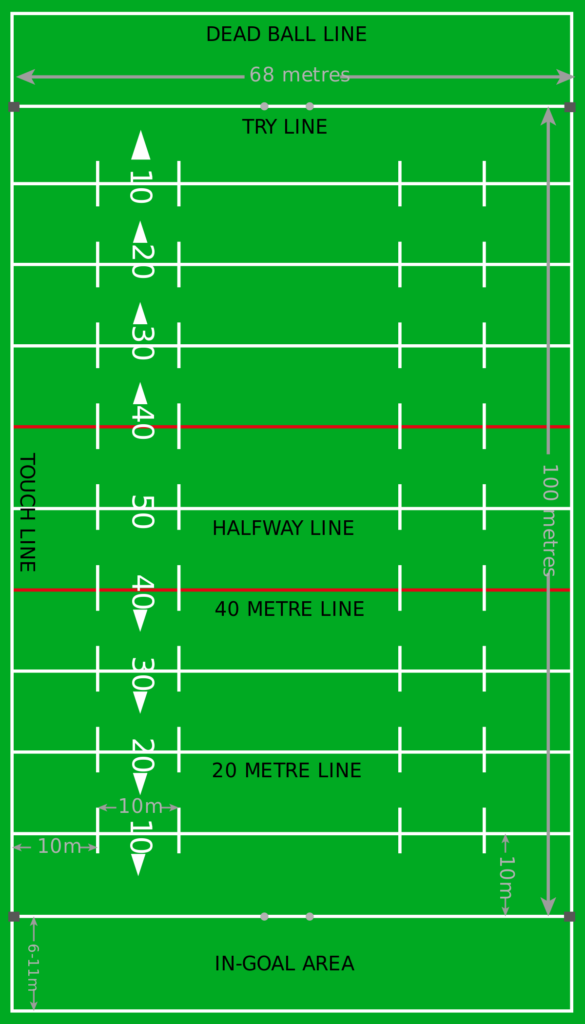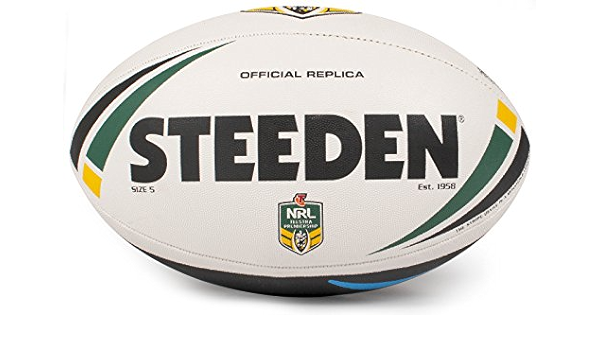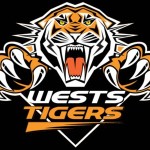Rugby League is a contact sport played between 2 teams with 13 players on each side. The came is played on a rectangular field that is 100 meters long and 68 meters wide.
The object of the game is to advance the ball up field and place the ball on the ground over the “try line”, which is at either end of the field. The ball can be advanced up the field just holding it and running up field, by kicking the balls, and passing the ball to other team members who can also run the ball up field. You can not pass the ball forward, however you can throw the ball laterally or backwards.
How Long Does A Rugby League Game Get Played For?
Rugby League is played over 80 minutes. The game is split into two 40 minutes halves.
Time runs continuously however time is stopped when an injury occurs or when a referee feels a team is wasting time by taking too long to kick a goal.
Scoring In Rugby League
Scoring a try is the main aim of the game of Rugby League. When a team crosses the try line they must place the ball on the ground for it to by a try.
A try is worth 4 points.
When you score a try you then get the option to “convert the try”, which consists of kicking a place kick off the ground that is kicked from a point in line on the field from which the try is scored.
Like all scoring plays from kicks, the ball much pass between the goal posts, and over the cross bar.
A try conversion is with 2 points.
A penalty goal can be given for rule infractions during the game. These consist of s place kick that is taken from the point of the field where the penalty is given.
A penalty kick is worth 2 points.
A field goal can be kicked in general play at any time, and consider of kicking a drop kick that is kicked between the goal posts.
A field goal kicked between 1 and 39 meters is worth one point. A field goal kicked from 40 or further out from the try line is with 2 points.
The Make Up Of A Rugby League Team
13 players take the field for a team in a Rugby League game.
There are also replacement players allowed in Rugby League, with 4 players on the bench. A 5th player is also named on the bench, but can only be used in case of an injury that has occurred through foul play.
Each team is allowed to swap players from the teams on the field and their bench 8 times during a game.
How Do Teams Play Rugby League?
In Rugby League you run the ball to advance it up field, and the opposition has to stop you. They do this by trying to tackle you.
When a tackle is affected, a player must stand to their feet, place the ball on the ground, and roll it backwards to a player standing behind them who then distributed the ball to your team mates.
Each team gets 6 tackles to advance the ball up the field in an effort to score a “try”. Once 6 tackles have been made, you must hand the ball over to the opposition team.
To stop a handover from occurring, many teams kick the ball after the 5th tackle to try and advance the ball further up the field than just turning the ball over.
What Does A Rugby League Field Look Like?
This image show not only the dimensions of a Rugby League field, but also gives the field markings and where they are placed on a Rugby League field:

What Type Of Ball Is Used In A Rugby League Game?
A Rugby League ball is oval shaped. The ball is 30 centimetres long. It is made of a synthetic, rubberised material with tiny dimples on it to make it better for gripping the ball in your hands.
The ball is inflated with air, and weighs around 400 grams.
This is a photo of a Rugby League match ball:

What Is A Penalty In Rugby League?
A penalty is awarded by the referee when they decide there has been an infraction in the rules of the game. They do this by blowing their whistle, which indicates to both teams to stop playing.
There are many reasons for a referee to award a penalty.
These can range from a dangerous tackle to technical infringements of the games rules.
When a team is awarded a penalty they have a few options as to how they can restart play. Then can “tap” the ball on their foot and continue advancing the ball up the field with a new set of 6 tackles to use.
They can kick the ball over the sideline, and then start the play again with a new set of 6 tackles to use from the point where the kicked ball crossed the plain over the sideline.
There is also the options to take a penalty kick at goal. Making a penalty goal is worth 2 points.
What Is A Dangerous Or High Tackle In Rugby League?
A head high tackle is a tackle in which a player is hit in the head or neck by a defensive player. When this occurs a penalty is given against the defensive team.
When a player is held is a standing tackle, it is illegal for another defensive player to come in and tackle the attacking player from the knee down. This is to lower the risk of lower leg injuries. When a player makes this type of tackle the defensive side has a penalty given against them.
Another illegal tackle type occurs when a player is “up-ended”, resulting in their head being driven towards the ground. When this occurs a penalty is also given against the defensive team.
There are other penalties that can be awarded by the referee for dangerous actions made by a defensive side in a tackle. The twisting of a player’s head and neck, twisting a players ankle or knee, twisting a players arm, or forcing it into an unnatural or dangerous position can all be penalised by the referee.
As such, defensive players try to avoid making these type of tackles during a game when possible.









